Crawling means moving by using the hands, legs, knees, stomach, or dragging the body near the ground. From slithering snakes to wrinkly snails, many animals crawl instead of walking, fly or running.
Most people think that only Reptiles can crawl. But if you look a little closer at the animal kingdom, you’ll find some truly fascinating creatures that use this form of locomotion as well. For example, some amphibians, insects, and mammals crawl.
If you’re interested in knowing about some of these animals, check out the list below to learn about 28 animals that crawl.
List of Animals that Crawl
Animals that dragged bodies to move are often called crawlers. Numerous creatures move by dragging. From the most common household pets to the exotic creatures you find in Africa and other far-flung corners of the globe.
You probably already know quite a few animals that are crawlers. But there are some that you might not be aware of. So read on to discover about animals that crawl, including spiders, worms, crabs, and lizards, as well as the tiniest tardigrade you’ve ever seen!
Here is the crawling animals names list:
| Number | Name | Crawl Speed | Type |
|---|---|---|---|
| 1 | Snake | 12.7 kph | Limbless reptiles. |
| 2 | Lizard | 16-20 km/h | Squamate reptiles. |
| 3 | Snails | 0.048 km/h | Mollusk (Invertebrate). |
| 4 | Worm | 8 – 56 m/hour | Invertebrate animals with bilateral symmetry. |
| 5 | Crocodile | 24 – 35 km/h | Semiaquatic Reptiles |
| 6 | Caterpillars | 1.6 km/h | Insects in the macrolepidopteran clade. |
| 7 | Alligators | 18 km/h | Reptile |
| 8 | Turtles | 0.2 – 0.5 km/h | Reptile |
| 9 | Ants | 1 cm/s | Insecta |
| 10 | Ladybug | 37 m/h | Beetles (insect order Coleoptera) |
| 11 | Green basilisk | 11.3 km/h | Brachyura |
| 12 | Lobster | 18 km/h | Invertebrate |
| 13 | Spiders | 1.9 km/h | Invertebrates |
| 14 | Millipede | Very slow | Myriapoda |
| 15 | Leeches | Slow | Hirudinea |
| 16 | Sea turtle | 1.4 to 9.3 km/h | Reptile |
| 17 | Land snails | 1 mm/sec | Gastropoda |
| 18 | Komodo Dragons | 19 km/h | Reptile |
| 19 | Geckos | 0.9 m/sec | Reptile |
| 20 | Sloths | 0.27 km/h | Mammal |
| 21 | Scorpions | 19 km/h | Arachnid |
| 22 | Banana Slugs | 15 cm/min | Gastropoda |
| 23 | Iguanas | 34 km/h | Reptile |
| 24 | Centipedes | 1.43 km/h | Myriapoda |
| 25 | Palola Viridis | N/A | Polychaeta |
| 26 | Crab | 0.3 -0.36 km/h | Malacostraca |
| 27 | Frogs | 16.1 km/h | Amphibians |
| 28 | Toads | 8 km/h | Amphibians |
It can be challenging to understand the many different ways animals move around their environments, but it’s especially true when you talk about creatures that crawl.
These creatures have four limbs that help them move around, but they have unique characteristics that set them apart from other animals that move around in the same way.
Now, let’s learn more about these drag animals with their pictures and facts.
Snake
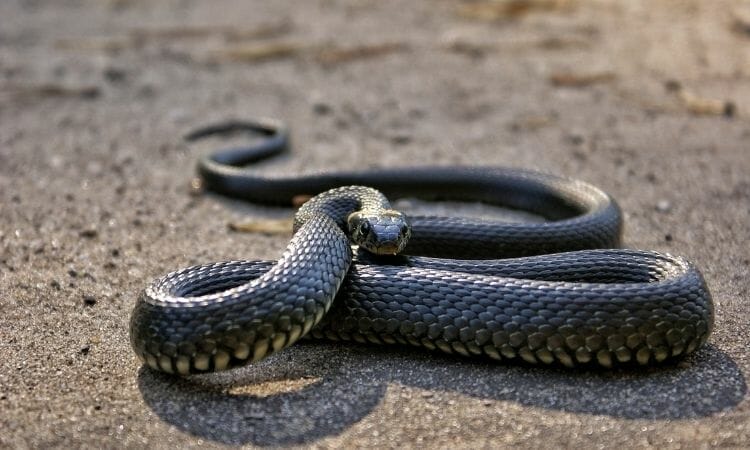
A snake is a legless reptile that has no arms or legs. Instead, the snake usually slithers, which means it moves by pushing its body along on land.
Snakes are carnivores (meat-eaters) that kill their prey with venomous fangs or constriction. They can be found in every continent except Antarctica, but most snakes live in tropical areas of Asia, Africa, and North America.
Lizard
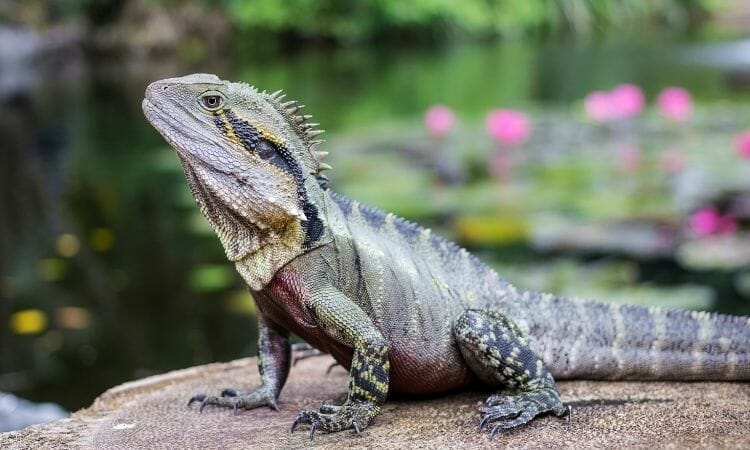
Often associated with reptiles, lizards are part of a family called Squamata. They have small legs but it isn’t enough to carry their full body. So, lizards have to move by dragging their stomach and tail.
Despite that, they can move fast. In fact, they can run at sixteen to twenty kilometers per hour. Moreover, the surprising fact is that some species can climb up vertical surfaces like walls!
They eat insects, spiders, worms, etc., and like other invertebrates, they can catch on or under rocks or stones. So they need to move fast.
Snails

According to Animal Diversity Web, a website funded by Rice University and Michigan State University, most snails have between two and eight pairs of tentacles surrounding their mouths.
Despite their reputation as slimy pests, most slugs serve essential roles in ecosystems as recyclers of decaying matter. Most slugs are harmless to humans. But there are a few species that often eat leafy greens and vegetables.
Worms
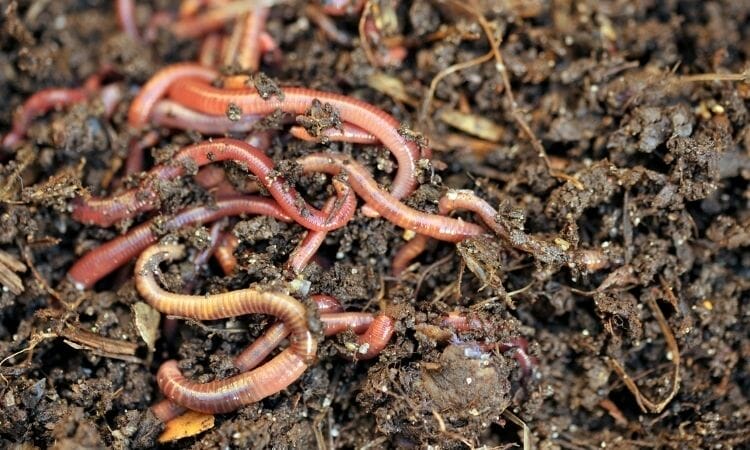
Did you know that worms are considered animals? They are, in fact, part of a larger group of animals called invertebrates, which also include insects.
Worms have different varieties. Some prefer moist environments, while others thrive in dry climates. Some look like snakes or flatworms; others like caterpillars or leeches.
Sometimes people call all types of worms earthworms. But they’re three different species: nightcrawlers, red wigglers, and dew worms.
Crocodiles
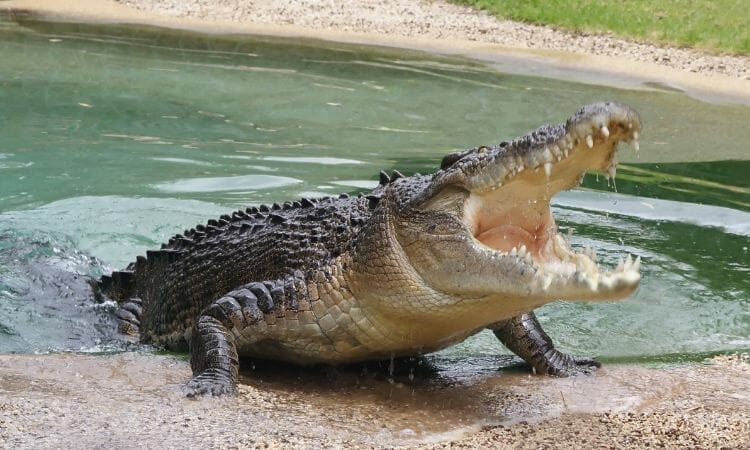
The crocodile is a giant reptile found in tropical areas around North America, Australia, Asia, Africa, and South America. Besides, crocodiles are well known for their long sharp teeth, which they use to catch fish, birds, and mammals.
They have to crawl because they have legs that can’t support their entire body weight. Crocodiles do not have limbs to walk on land. Instead, they move by dragging their bellies as they move forward.
Caterpillars

Caterpillars are perhaps best known for their crawling antics. Besides, caterpillars are also known for their ability to undergo metamorphosis into butterflies or moths.
However, some caterpillars do not have wings and remain crawling on plants where they feed. A particularly famous example of a caterpillar is its larval form, commonly called a woolly bear in North America due to its appearance of being covered in fur.
Caterpillars munch on leaves, flowers, and other plant matter, transforming into pupae before emerging as adult butterflies or moths. These insects go through five distinct developmental stages: egg, larva (caterpillar), pupae (chrysalis), adult butterfly or moth, and adult.
Alligators
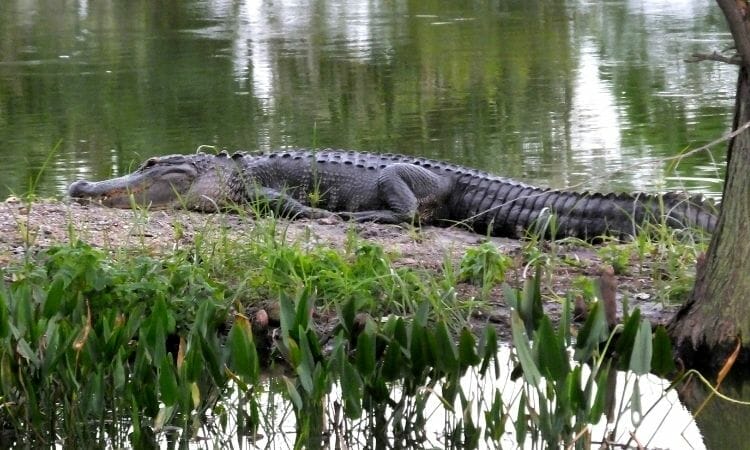
The alligators are crawling reptiles that may grow to be 14 feet long. It has prominent front legs used for feeding and propelling itself across the land, but it can also move well through water.
The alligator is one of several species of crocodilians, an order of reptiles including crocodiles, caimans, and gharials. You can identify them by their long, narrow snouts.
Turtles
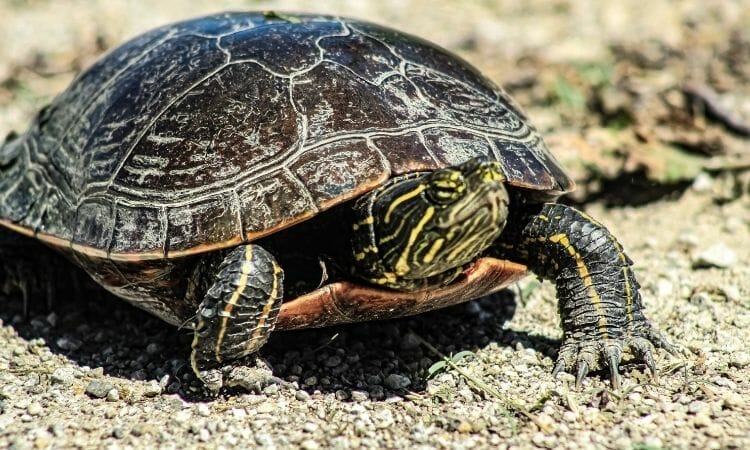
If there were a list of crawling animals, turtles would undoubtedly be on it. Even though they are reptiles, not amphibians, they are just one of many species that move around on their bellies.
While some turtle species live in freshwater environments and breathe air via external means, others live in saltwater environments and don’t have to breathe at all! Turtles can range in size from as small as an inch to nearly two feet tall.
Ants
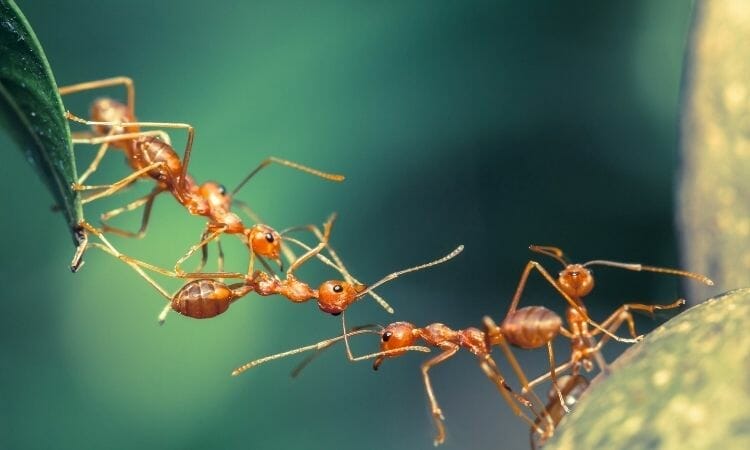
You might think ants are tiny, but they have an enormous impact. Ants are one of nature’s most prolific creatures. Moreover, without them, our world would be a very different place. But, they are considered as some of the weakest animals in the world.
Not only do ants provide us with essential functions like recycling food scraps. And, they also play a crucial role in keeping other pest populations down.
Ant’s crawl speed is about 1cm/sec. However, they can run faster at 1 miter per second.
Ladybug
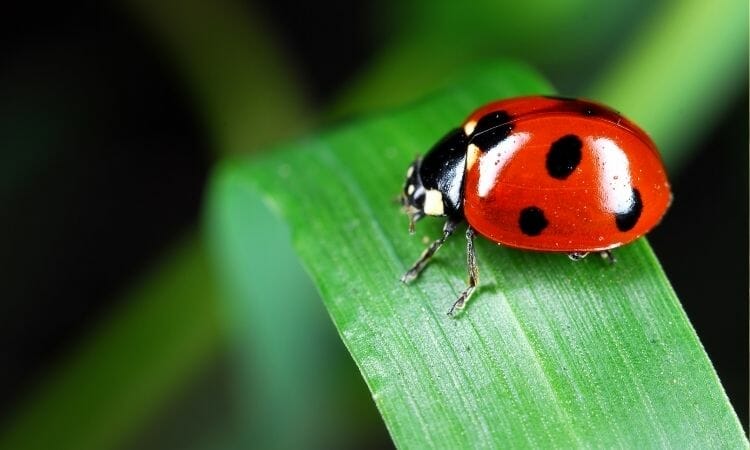
One animal that crawls is a ladybug. A mature ladybug will eat up to 50 aphids in its lifetime. The only other member of the insect order that also has wings.
Besides, it looks like tiny little planes is another arthropod called an antlion, or doodlebug. Antlions are closely related to dragonflies and damselflies. Both can be spotted flying around during the summer months.
Which Animal Crawls on Stomach?
Animals are some of the cutest beings on earth, but not all walk around on their four feet. Instead, some of these animals crawl on their stomachs, including some insects, fish, amphibians, and reptiles.
Reptiles, spend much of their time crawling on their stomachs. Lizards, snakes, turtles, and crocodiles, etc crawl on their belly. However, sometimes dogs, cats also crawl on their stomachs. Today, there are still more than 10,000 species of reptiles living on every continent.
Amphibians, like a frog, toads have four legs. However, they like to crawl rather than hop.
Difference Between Crawling and Creeping
There is a difference between crawling and creeping. Both involve moving through an area by pulling your body forward with your hands and knees, but creep does not imply that one is traveling slowly or carefully.
It’s also important to note that crawlers generally move faster than creepers—and they usually do so more efficiently.
This means that crawlers require less energy to get from point A to point B. In addition, it makes them a viable form of locomotion for fast-moving animals like rats and cats.
In short: if you’re trying to figure out whether an animal is crawling or creeping, look at its elbows—if they can flex independently from its wrists, then you should probably call it crawling; if not, then creeping may be a better fit.
I hope you enjoyed the list. If so, feel free to share it with your friends.
Now, comment below what is your favorite animal that crawls?


You May Also Read